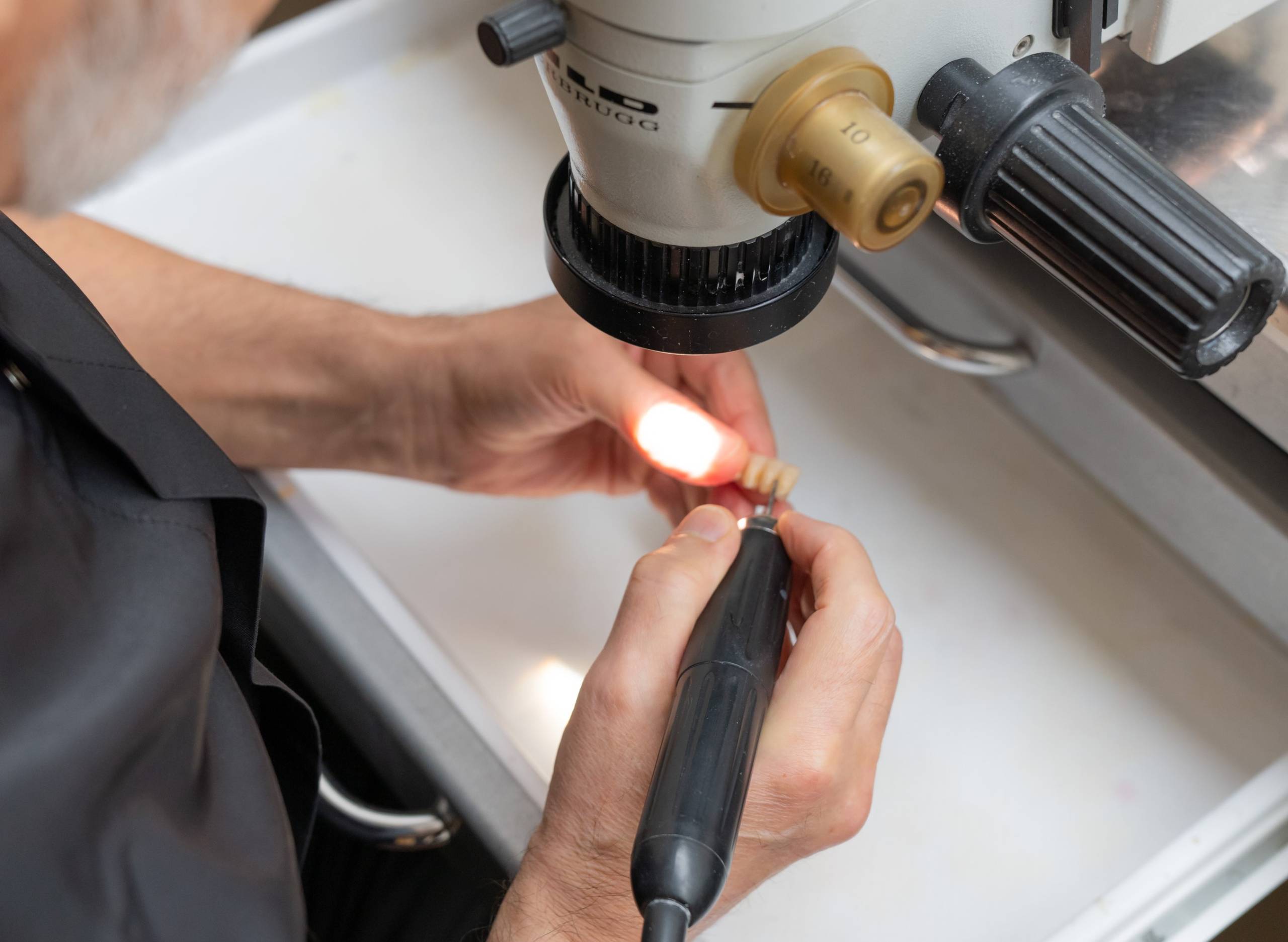Treatment of dental agenesis
Dental agenesis is a prevalent dental abnormality in both sexes.
It is one of the most common dental anomalies and is of great clinical interest.
Dental agenesis can negatively affect adjacent teeth’ eruptive process, aesthetic appearance, and masticatory function.
Early diagnosis is beneficial for managing this problem, which often requires multidisciplinary treatment involving different disciplines such as orthodontics, implantology, prosthetics, and conservative dentistry.
What is the therapy for the treatment of dental agenesis?
Several possible approaches to treat agenesis exist, depending on the clinical situation and the patient’s and parents’ expectations.
The insertion of a removable partial denture that replaces the missing tooth
The insertion of a fixed partial denture type Maryland (Glued to adjacent teeth)
The closure of the space using an orthodontic treatment that moves the adjacent teeth, associated or not with camouflage with composite materials to modify and harmonize the shapes of some teeth
The recovery of the ideal space through orthodontic treatment and the subsequent replacement of the missing tooth with a prosthetic crown anchored to an osseointegrated implant.
What are the advantages and disadvantages of the various possible approaches?

Removable partial dentures are now scarcely used due to the discomfort and social insecurity they produce in patients. They also help further reabsorb the bone crest, making it difficult to insert an osseointegrated implant.
The Maryland adhesive prosthesis replaces, both functionally and aesthetically, the tooth that is missing and is highly economical. Its only disadvantage is that it can de-cement (detach), inconveniencing the patient. Instead, it is an excellent long-term provisional that allows young patients to complete their development before placing an endo-osseous implant. Suppose the teeth affected by agenesis are molars and premolars. In that case, orthodontic therapy can be used to close the spaces present and recover the physiological alignment of the teeth in the arch. In the posterior sectors, i.e., from the canine onwards, this choice has no aesthetic repercussions and allows the recovery of the functionality of the oral cavity, simplifying the treatment. After surgery, a restraint device will be needed to stabilize the new dental setup.
Finally, especially in the presence of agenesis of the upper lateral incisors and where aesthetic expectations are high, the recovery of the ideal space through orthodontic treatment and the subsequent replacement of the missing tooth with a prosthetic crown anchored to an osseointegrated implant is the most brilliant and conservative remedy possible today. If well-planned and performed, this therapy involves the most significant long-term aesthetic and functional advantages.
The most significant disadvantage is the technical difficulties related to the deficit of the alveolar bone at the edentulous site, which is hypo-developed due to the congenital lack of the tooth.
This technical problem can be overcome through the MTM approach developed by our team.
Unlike all other bone regenerative procedures, this approach involves a single surgical session and avoids using membranes, bone transplants, synthetic material grafts, and multiple interventions to restore the local anatomy.
In most cases, the treatment times (implants and definitive prosthetic reconstruction) of complex issues with the MTM approach is only 3-4 months and drastically reduces both the risks of complications and the biological costs for the patient and optimizes the camouflage integration of the prosthetic device.
Studio Calesini is internationally considered one of the best centers for treating dental agenesis with aesthetic implications.